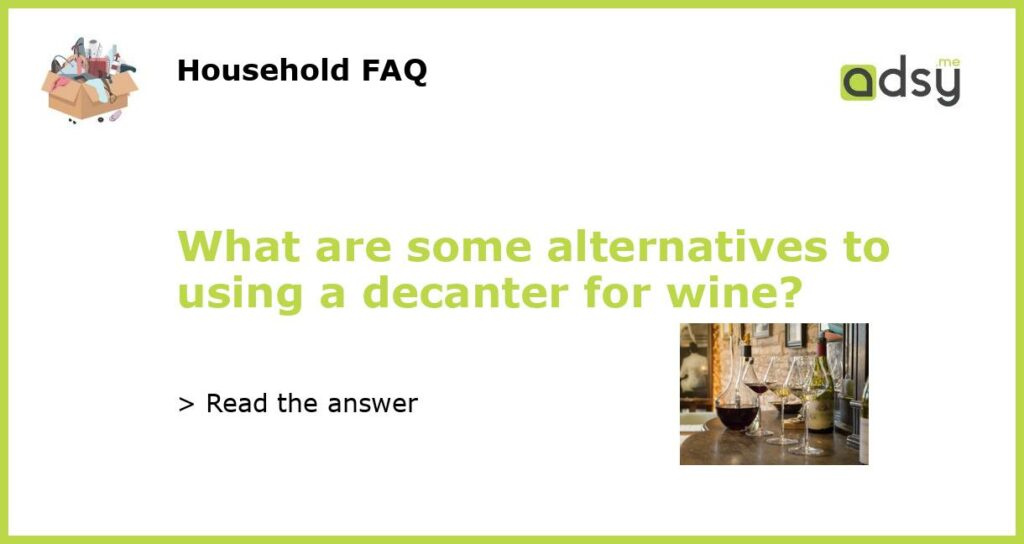Aerator
One popular alternative to using a decanter for wine is to use an aerator. An aerator is a device that mixes air with wine as it is poured, helping it to open up and release its aroma and flavor. There are many different types of aerators available, from handheld options to those that attach to the bottle. One popular example is the Vintorio Wine Aerator Pourer, which is designed to fit on all types of wine bottles and provides a no-drip spout for easy pouring.
Wine Glass
Another alternative to using a decanter for wine is to simply serve it in a wine glass. Swirling the wine in the glass can help to aerate it and release its aroma and flavor. Some wine enthusiasts even use specialized glasses, such as those with a wider bowl to allow for more surface area and better aeration. The Riedel Vinum Bordeaux glass is a popular choice for this, as it is specifically designed to enhance the taste and aroma of full-bodied red wines.
Vacuum Sealer
If you have leftover wine and want to preserve it for later, a vacuum sealer can be a great alternative to using a decanter. Vacuum sealers remove the air from the bottle, helping to prevent oxidation and keep the wine fresh. There are many different types of vacuum sealers available, from manual options to those with automatic seals. One popular example is the Vacu Vin Wine Saver, which is designed to fit on all types of wine bottles and includes reusable stoppers.
Wine Carafe
A wine carafe is another alternative to using a decanter for wine. Carafes are typically made of glass or crystal and come in a variety of shapes and sizes. They allow the wine to breathe and can also be used to remove sediment from older wines. Some popular options include the Waterford Lismore Wine Carafe and the Ravenscroft Crystal Classic Decanter.
Blender
While it may seem unconventional, using a blender is another alternative to using a decanter for wine. Blending the wine for a few seconds can help to aerate it and release its flavor and aroma. This is a particularly useful option for younger or less expensive wines that may benefit from a bit of extra help to open up. However, it’s important to note that this method should be used with caution and only for certain types of wine, as excessive blending can damage the wine.






